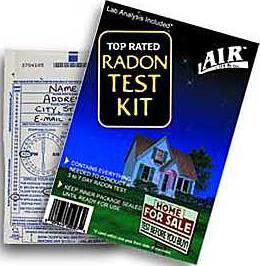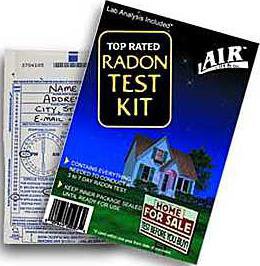It cannot be seen, smelled or tasted, yet this lethal gas is found in one out of every 15 homes in the United States.
It is responsible for 200 new cases of lung cancer in Kansas each year.
It can be found in elevated levels all over Barton County.
It is radon and January marks National Radon Action Month, a time when federal, state and local officials urge residents to test for the carcinogenic substance, said Barton County Extension Agent Donna Krug. “This is something we all need to be aware of.”
Radon is a gas that comes from the natural decay of uranium in soil, rock, and water. It seeps up through the soil and into buildings, finding cracks in foundations, through holes, around pipes or through the water system.
Krug said it causes no immediate symptoms but is the number one cause of lung cancer among non-smokers and kills more than 21,000 each year in the United States. That is about 12 percent of all U.S. lung cancer deaths.
“Radon is a dangerous health threat to our families and communities that can be easily avoided through simple testing,” said Karl Brooks, Environmental Protection Agency Region 7 Administrator. “This month, I urge everyone to test their homes.”
According to the Kansas Radon Program (part of the Kansas Extension Service at Kansas State University), the average level was 4.8 picocuries per liter (pCi/L) in Kansas in 2010 with a maximum of 260. Environmental officials recommend fixing radon levels at or above 4 pCi/L.
The report noted the average radon level in Barton County in that year was also 4.8 pCi/L. The maximum radon level in the county was 53.2. Of the 663 tests made, 279 were above 4.
The amount of radon in the soil depends on soil chemistry, which varies from one house to the next, the KRP notes. Levels of the gas in the soil range from a few hundred to several thousands of pCi/L. The amount depends on the weather, soil porosity, soil moisture, and the suction within the house.
The EPA and the U.S. Surgeon General recommend that all homes, both with and without basements, be tested for radon. Affordable do-it-yourself radon test kits are available at home improvement and hardware stores and online. A qualified radon tester can also be hired by contacting your state radon office.
“We always try to have a supply of short term radon test kits available for purchase at the Barton County Extension Service,” Krug said. They cost $5 each “I consider that a small price to pay for the peace of mind families receive from testing for radon.”
If the test shows a high concentration, she suggests the home owner contact her. “I have an updated list of certified companies who do mitigation that I am happy to share.”
Household remedies include the installation of a ventilation system and perhaps a suction fan to vent the gas out of the home. In addition to testing for radon, there now are safer and healthier radon-resistant construction techniques that home buyers can discuss with builders to prevent this health hazard.
In 2011, EPA announced the Federal Radon Action Plan, along with General Services Administration and the departments of Agriculture; Defense; Energy; Health and Human Services; Housing and Urban Development; Interior; and Veterans Affairs. This action plan will demonstrate the importance of radon risk reduction, address finance and incentive issues to drive testing and mitigation, and build demand for services from industry professionals.
For more information, call Krug at 620-792-1910, the Kansas Radon Hotline at 800-693-5343, or visit kansasradonprogram.org.
Its a gas
January is Radon Action Month





